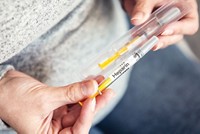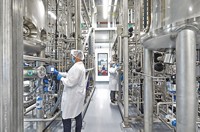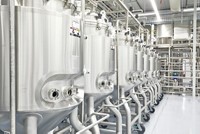Advertisement
Grab your lab coat. Let's get started
Welcome!
Welcome!
Create an account below to get 6 C&EN articles per month, receive newsletters and more - all free.
It seems this is your first time logging in online. Please enter the following information to continue.
As an ACS member you automatically get access to this site. All we need is few more details to create your reading experience.
Not you? Sign in with a different account.
Not you? Sign in with a different account.
ERROR 1
ERROR 1
ERROR 2
ERROR 2
ERROR 2
ERROR 2
ERROR 2
Password and Confirm password must match.
If you have an ACS member number, please enter it here so we can link this account to your membership. (optional)
ERROR 2
ACS values your privacy. By submitting your information, you are gaining access to C&EN and subscribing to our weekly newsletter. We use the information you provide to make your reading experience better, and we will never sell your data to third party members.
Pharmaceutical Chemicals
Optimvia to scale new route to synthetic heparin
Start-up seeks to replace pig intestines as source of the blood thinner
by Matt Blois
January 12, 2022
| A version of this story appeared in
Volume 100, Issue 2

The Ohio biotechnology firm Optimvia Pharmaceuticals says it has developed a cost-effective synthetic method to produce large quantities of heparin, which is used to make a common blood thinner. And last week the company struck a deal with the synthetic biology firm Ginkgo Bioworks to scale the process up.
Most of the world’s heparin comes from the mucus of pig intestines, largely processed at factories in China. A contamination incident in 2007 and 2008 that killed hundreds of people raised concerns about the drug’s quality. After a 2019 swine flu outbreak killed millions of pigs in China, US lawmakers questioned the reliability of a supply chain that depends on a single species of livestock.
Those concerns have sparked interest in a synthetic version of heparin. Sanofi and Organon launched a synthetic heparin called fondaparinux in the US in 2001. But it accounts for only a small share of the market because it’s more expensive and has some clinical drawbacks. Academic researchers have created syntheticheparins that avoid some of those drawbacks, but they haven’t been commercialized yet.
According to patentfilings, Optimvia’s technology, based on the research of biochemist and founder Tarsis Ferreira, uses an engineered enzyme to eliminate the need for 3′-phosphoadenosine-5′-phosphosulfate, also called PAPS, a cofactor necessary for other methods of synthetic heparin production.
“It’s really expensive. It’s really unstable. You need to store it at minus 80 Celsius,” Optimvia CEO Keith Kleeman says of PAPS. “It is an absolutely horrible sulfate donor.”
In addition to being pricey, PAPS quickly decomposes into adenosine 3′,5′-diphosphate, which slows the biochemical reaction that produces synthetic heparin. That has been a major barrier to large-scale production, Kleeman says.
Living organisms can metabolize adenosine 3′,5′-diphosphate, allowing them to use PAPS to make heparin without a problem. Chemist Chi-Huey Wong’s lab at Scripps Research has developed methods for recycling adenosine 3′,5′-diphosphate outside of living organisms, but Kleeman argues it’s better to avoid PAPS altogether.
Kuberan Balagurunathan, a medicinal chemist at the University of Utah who has worked on molecules related to heparin, says Optimvia has an innovative approach that could solve a real problem. He cautions that it’s hard to fully evaluate the technology based solely on the patent. The real proof of success will be demonstrating that the concept works at large scale.
“There’s definitely an element of novelty,” Balagurunathan says. “This is something that would definitely move us one step closer to making a synthetic, low-molecular-weight heparin.”
Jian Liu, a researcher studying synthetic heparin at the University of North Carolina who has started his own synthetic heparin company, says Optimvia has a novel method. But he doesn’t view PAPS as a major barrier to scaling up production. Liu says his company, Glycan Therapeutics, which has received more than $9 million in grants from the US National Institutes of Health, can produce heparin at large enough scale to launch a clinical trial, which he hopes to do soon.
“We still have to drop the production cost a little bit,” he says. “Heparin is still a commodity. It’s pretty challenging to get people to switch from a relatively cheap product to a synthetic product, even though the synthetic product has a lot of advantages.”
Optimvia has so far raised “minimal” funding, Kleeman says, and has only tested the process at small scale. Now, the company will work at a Ginkgo facility to scale up its process to a 250 L bioreactor. If that’s successful, Kleeman is hopeful Optimvia can step up to a 50,000 L bioreactor and reach commercial production.
Given the inherent risks of relying on a farm animal for a critical medicine, Balagurunathan says he is rooting for Optimvia. “We cannot rely on animal sources for too long,” he says. “Instead of waiting for disasters to happen, it’s better to figure it out now.”





Join the conversation
Contact the reporter
Submit a Letter to the Editor for publication
Engage with us on Twitter